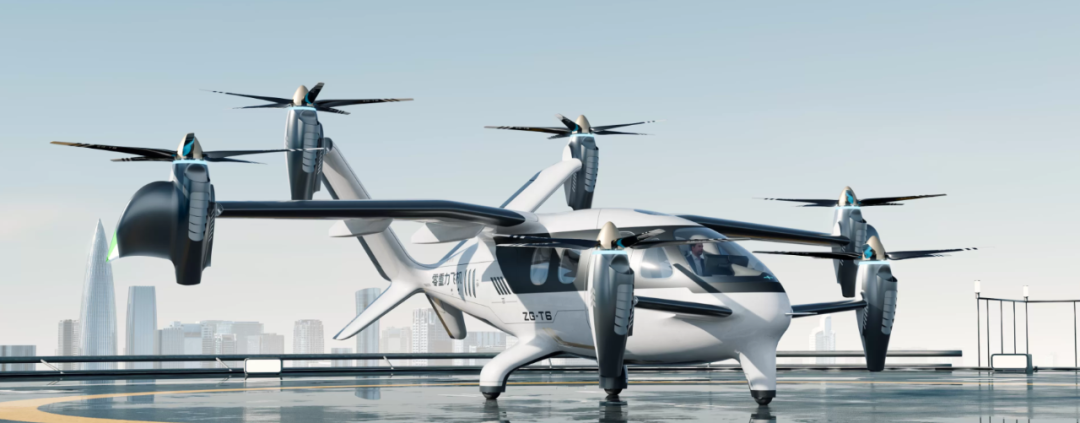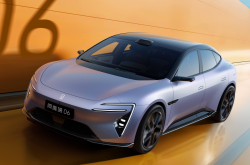Securing 300 Million Yuan in Funding! Nanjing University of Aeronautics and Astronautics PhD Student Pioneers Low-Altitude Aircraft: Priced at 120 Yuan Per Flight
![]() 10/10 2025
10/10 2025
![]() 579
579

Have you caught wind of the latest buzz? Today, an electric aircraft company, Zero-G Aircraft, has successfully raised a staggering 300 million yuan.
Based in Hefei and established in 2021, this company has already gone through seven rounds of funding, reaching what's colloquially known as the 'A+++ round' (according to Pencil Data). If the funding spree continues, we might soon run out of '+' signs to denote the rounds!
Zero-G Aircraft is setting its sights on the future of transportation: electric vertical take-off and landing (eVTOL) aircraft.
While electric vehicles are currently stealing the limelight, it's plausible that within the next five years, electric aircraft will take center stage. Imagine future National Day holidays where, instead of being stuck in traffic jams on the ground, we could soar through the skies, traveling 'by air and returning by air,' thus avoiding the crowds.
The realization of these beautiful visions hinges on the diligent efforts of companies like Zero-G Aircraft. In the near term, eVTOLs are already being utilized for sightseeing tourism and pilot training, with significant potential for intercity transportation in the future.
- 01 -
The brain behind Zero-G Aircraft is Li Yiheng, a native of Zhoukou, Henan Province, and a PhD graduate from Nanjing University of Aeronautics and Astronautics. At the tender age of 16, driven by a passion for aircraft design, he enrolled at NUAA and embarked on entrepreneurial ventures during his university years, focusing on aircraft model development and certification projects.
In 2018, his research project played a pivotal role in helping a domestic general aviation company secure relevant airworthiness certifications for its small aircraft. That same year, he launched a small aircraft entrepreneurship plan.
So, what exactly does Zero-G Aircraft do? The key terms to understand are: low-altitude + electric + vertical take-off and landing + manned aircraft (eVTOL).
'Low-altitude' refers to the operational altitude of these aircraft, flying at relatively low heights, not venturing into the stratosphere or space. According to the 'National Airspace Basic Classification Method,' low-altitude generally denotes heights not exceeding 500 meters.
Of course, there are variations within this altitude range. For instance, 0-120 meters is primarily reserved for aerial photography drones; 120-300 meters sees more passenger and cargo operations; and 200-450 meters is predominantly used for vertical take-off and landing manned aircraft.
'Electric' pertains to the power source of these aircraft. While many current aircraft rely on fuel, such as helicopters and some military aircraft, Zero-G Aircraft focuses on electric propulsion.
'Vertical take-off and landing' describes the method of take-off and landing. Besides vertical operations, another mainstream method involves using runways. 'Manned aircraft' indicates that these aircraft are designed for transporting people, not goods.
- 02 -
Of course, some may wonder: With electric vehicles nearing market saturation, what market exists for electric aircraft? The answer is, there is a market, albeit one that hasn't yet become a part of everyday life.
One promising scenario is sightseeing. If you're a frequent traveler, you've likely encountered fuel-powered helicopters at scenic spots, charging exorbitant prices of 2,000-3,000 yuan per ticket—a luxury for most. Why are the prices so high? Because the operational costs are substantial.
Traditional small fuel-powered aircraft cost around 650 yuan per hour to operate (including fuel, maintenance, etc.). When you factor in pilot wages and scenic area costs, charging 2,000-3,000 yuan seems somewhat justifiable.
In contrast, Zero-G's aircraft cost approximately 120 yuan per hour to fly—just one-fifth of the cost of traditional aircraft (Anhui Business Daily).
The same 'cost logic' applies to flight training aircraft and intercity manned aircraft.
Overall, the market is still in its infancy, as only a handful of people currently require such services. As of early 2025, Zero-G Aircraft has sold a cumulative total of 60 aircraft (including orders) and has another 1,000 Indent Orders (letters of intent).
Compared to China's 470 million aviation users, these sales figures underscore that the industry is still in its early stages, currently in the demand validation phase.
After all, the industry is relatively young. Zero-G operates in the electric vertical take-off and landing (eVTOL) sector—a field that only began to gain momentum after 2015.
At that time, breakthroughs in lithium battery technology led to the development of 'multi-rotor configurations,' primarily for cargo aircraft. Why cargo aircraft? Because there were no established airworthiness standards in the industry yet.
By 2020, domestic low-altitude open policies were introduced, and the Civil Aviation Administration issued regulations (eVTOL certification rules). With favorable technological and policy conditions, manned aircraft became the focal point of competition.
After five years of development, certain scenarios have proven to be essential, particularly low-altitude sightseeing tourism and pilot training.
The demand for low-altitude sightseeing tourism is straightforward. What about pilot training? eVTOLs represent a new category, and like obtaining a driver's license, they require certification—does that make sense?
According to Spherical Insights & Consulting, the global pilot training market is projected to grow from $8.5 billion in 2023 to $20.8 billion in 2033, with a compound annual growth rate of 9.36%.
Within this market, low-altitude tourism pilots represent a promising sector. For example, Huangshan Scenic Area has a daily capacity of 40,000 visitors (official data), and traditional cable cars and thousand-yuan helicopter rides are nearing capacity.
- 03 -
If there's demand, why isn't eVTOL development progressing faster? Several bottlenecks exist: lengthy airworthiness certification cycles, inadequate infrastructure, and high operational costs.
Firstly, the paperwork is cumbersome. Setting aside the lengthy certification timelines, the cost of airworthiness certification alone can reach hundreds of millions of yuan, which most small and medium-sized enterprises cannot afford.
Secondly, infrastructure is lacking: aircraft need airports. While China has designated several low-altitude economy pilot cities, such as Shenzhen and Zhuhai, take-off and landing points are still under construction, making it difficult to operate eVTOLs at scale. For instance, Shenzhen has built 249 low-altitude facilities and aims to have over 1,200 by 2026.
Thirdly, the technology is still immature, and the user experience is subpar, encompassing both cost and operational aspects.
Currently, eVTOL batteries generally have low energy density (around 300Wh/kg), resulting in flight times under one hour—this leads to high power costs, making travel less appealing than taking a taxi.
Additionally, some eVTOLs generate noise exceeding 65 decibels (even reaching 70 decibels)—annoying enough that taking a taxi might seem preferable.
Of course, new technologies are rarely perfect from the outset, like newborn babies—they may appear 'ugly' initially but grow to be more appealing over time.
Currently, leading companies in the industry have emerged, such as EHang, AutoFlight, Zero-G, Eve Air Mobility, and MuYutian Aviation. However, looking ahead ten years, the industry's blue ocean potential remains vast.
For example, fewer than ten certified electric manned aircraft exist in China, while the general aviation training market alone requires hundreds of new training aircraft annually.
For instance, EHang's EH216-S is the world's first 'four-certificate' low-altitude manned aircraft; AutoFlight's V2000CG Kerry Owl received its type certificate, production certificate, and individual airworthiness certificate in 2025, becoming the first 'triple-certified' ton-class eVTOL globally.
Additionally, growing companies like AutoFlight, Zero-G, and Volant are actively pursuing certifications but have not yet obtained all necessary documents.
- 04 -
The industry is entering a technological race focused on three key dimensions:
1. Developing high-energy-density batteries to extend range from 50 km to over 300 km; 2. Reducing flight noise and failure risks, such as with distributed electric propulsion systems; 3. Implementing autonomous safe flight technologies, like redundant flight control systems.
These advancements will unlock new scenarios and applications.
In scenic areas, electric eVTOLs could reduce sightseeing costs to the hundred-yuan range, activating mass consumer markets; in cities, electric fixed-wing aircraft could establish '1-hour commuting circles,' alleviating ground traffic pressure; in remote areas, low-cost aircraft could bridge the 'last mile' of medical rescue.
The critical timeframe for these applications is 2027-2028.
By 2027, some mega and provincial capital cities may introduce eVTOL sightseeing services. As the market develops, more scenic spots will open low-altitude airspace and build vertical take-off and landing points, with eVTOLs expanding from top attractions to broader regions. By 2040, eVTOL penetration in Class A scenic spots could reach 4%-11%, with annual sales nearing 4,000 units and a market size of $800 million.
Secondly, for urban commuting, Luo Jun, Chairman of the China Low-Altitude Economy Alliance, stated that by 2027, some mega and provincial capital cities could achieve eVTOL commercialization, enabling 'air taxi' services.
By 2030, major cities will largely enter the low-altitude economy era, with eVTOLs gradually entering households and urban commuting scenarios becoming widespread. Reports from Europe Times also indicate that multiple cities expect regular 'air taxi' operations by 2030, with fixed flight paths and normalized services providing new travel options.
Finally, for medical rescue in remote areas, this scenario is still in its individual case stages. For example, in August 2025, Chun'an County and the Hangzhou Health Commission conducted a water, land, and air integrated emergency drill, involving eVTOLs and other low-altitude aircraft in medical emergency rescue.
Domestic policy documents suggest that some cities plan to introduce medical eVTOLs by 2028.
This article does not constitute any investment advice.





